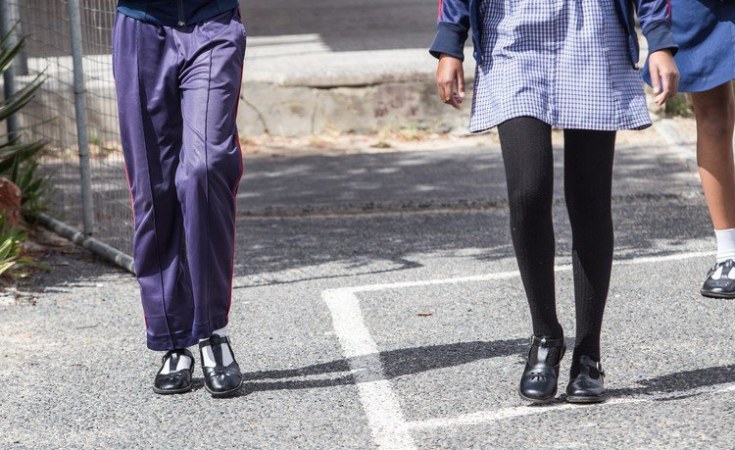Will the kids be alright? There was hope that children and adolescents would "bounce back" as the pandemic progressed, but sadly, the data suggest otherwise.
Twenty-five percent of children and adolescents reported that they have experienced significant depression. The incidence and hospitalization rates for new onset eating disorders increased by 60 per cent during the COVID-19 pandemic.
Precipitants of mental illness have also increased dramatically for children and adolescents in the pandemic. Screen time increased by 50 per cent, physical activity decreased by 20 per cent, loneliness increased, family violence increased, and parent depression and anxiety doubled.
Many of the experiences and opportunities that help children and teens build identity, friendships, supports and personal growth were also stripped away during the pandemic.
Child and adolescent suicide attempts
An unfortunate, but commonly used, indicator of the state of children's and adolescents' mental health is suicide attempts. There has been repeated discussion as to whether suicide attempts were within historic trends, or have increased during the pandemic among children and adolescents.
To inform this discussion, our research team conducted a systematic review, published in Lancet Psychiatry, of the literature on 11.1 million children's and adolescents' emergency department visits in 18 countries.
In our study, we compared the rate of children's and adolescents' emergency department visits for suicide attempts that occurred before the pandemic, to the rate that occurred during the pandemic. In doing so, we provide the most rigorous test to date of whether the number of children and adolescents presenting to the emergency department for suicide attempts has increased, decreased or stayed the same during the pandemic.
We found that the rate of suicide attempts for children and adolescents increased by 22 per cent during the pandemic compared to before the pandemic. Specifically, we found that on average, in any given emergency department setting, there were 102 child and adolescent visits per month for suicide attempts before the pandemic, which increased to 125 during the months of the pandemic.
The pandemic has been difficult for many, and the results of our study highlight just how difficult, and potentially fatal, it has been for children and adolescents.
Girls attempt suicide more than boys
When we looked deeper into who was more likely to show increases in suicidal behaviour, we found that the rate of emergency department visits during the pandemic increased by 39 per cent for girls, and by six per cent for boys.
This finding is consistent with previous data on teen suicide, which shows that while girls are more likely to attempt suicide and seek mental health care for their distress, boys are more likely to die by suicide.
There are several factors that may be contributing to these gender differences. First, girls are more likely than boys to seek help when they are distressed, even when that distress is severe and potentially life-threatening.
Second, girls are also more likely to have, and sought care for, underlying mental health disorders, such as depression or anxiety, which are more common among adolescent girls than adolescent boys.
Third, girls may be more comfortable talking with a health-care professional about their feelings. As a society we may also, either intentionally or unintentionally, encourage girls to think and talk about their feelings more than we do for boys. This may lead boys to think or feel that it's not okay to admit to thoughts of hopelessness, death and suicide, or seek help when they occur.
Prevention is key to fostering well-being
Our research allows us to say more conclusively that the frequent and prolonged exposure to pandemic stressors (such as repeated school closures, social distancing, online learning), combined with limited access to protective supports (for example, extracurriculars, sports, community centres, school counsellors), have likely led to a mental health crisis, the likes of which children and teens have never experienced before.
This crisis requires immediate attention from governments and policymakers. The needs of children and adolescents must be central in health care decision making.
The mental health crisis can be de-escalated through the creation and implementation of prevention strategies and supports. There is very good evidence that it's better to create upstream solutions to prevent mental illness, than costly downstream interventions to mitigate mental illness in individuals once it's established.
Prevention strategies should be implemented early in development, to help children and adolescents gain greater comfort in identifying and expressing their emotions. Mental health care needs to be accessible, convenient and cost effective, spanning "promotion, prevention, early intervention and treatment."
Prevention strategies should be mindful of the gender differences in suicidal behaviour among girls and boys, and tailor their initiatives accordingly. Strategies for girls should focus on bolstering supports in health-care settings since girls are likely to engage in help-seeking. Strategies for boys should focus on reducing mental health stigma to increase boys' comfort in reaching out, and engaging with, adults that they trust and mental health services.
It is important that countries and governments prioritize the mental health of children and adolescents to help reduce the burden of mental illness and improve overall health and well-being. There is no better investment than in the lives of children and adolescents, as they are the next generation of societal contributors and citizens.
Information on suicide prevention can be found here. Distress lines in Canada are open 24 hours a day. Kids Help Phone: 1-800-668-6868. Talk Suicide Canada: 1-833-456-4566 or text 45645. Québec residents: 1-866-277-3553. If you live outside of Canada, please look up a suicide help line in your geographical location.
Sheri Madigan, Professor, Canada Research Chair in Determinants of Child Development, Owerko Centre at the Alberta Children's Hospital Research Institute, University of Calgary
Daphne Korczak, Child and Adolescent Psychiatrist, SickKids' Chair in Child and Youth Medical Psychiatry, Associate Professor, University of Toronto
Jackson Hewitt, Graduate Student, Clinical Psychology, University of Calgary
Nicole Racine, Assistant professor, School of Psychology, L'Université d'Ottawa/University of Ottawa
Tracy Vaillancourt, Tier 1 Canada Research Chair in School-Based Mental Health and Violence Prevention, L'Université d'Ottawa/University of Ottawa


